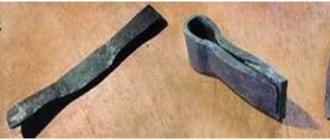The new Fallout is as much an echo of the Cold War as it is of Soviet radiation shelters: both are cool, and both are best read about here. Disgusting men talk about what the shelters were like in the Eastern Bloc, and how they were supposed to save ordinary Soviet comrades from the nuclear winter.
War, of course, never changes, but the particulars vary depending on place and time, and are endlessly interesting to explore. The Fallout series as a whole gave an idea of the role that shelters played in the life and culture of ordinary Americans, but we want to talk about how things were with this in the USSR. What were the shelters like, what was inside, and were there hydroponic installations and Kalashnikovs everywhere?
Civil Defense Shelter VS Vault-Tec
Special structures for protection against weapons of mass destruction are a real mirror of society and worldviews: by learning how and where shelters were built, you can understand a lot about the people and ideas of that time.
An elementary example: in the USA there were many individual and even personal shelters, while in the USSR there were exclusively joint and state ones. It’s not that Soviet people developed collectivism so exceptionally, it’s just that in the Union only the state could build something like that: all the equipment was government and military, and no one would sell, for example, a unique radiation filter to an individual citizen.
In addition, many Cold War Americans had already moved into sprawling suburbs and found it difficult to access large shelters, so many panicked and built their own in their own backyards.
And yes, this has already happened in The Simpsons.
Shelters have experienced the evolution of weapons of mass destruction, constantly adapting to new ways to kill civilians.
Apart from medieval fortresses, it all started with more or less sealed gas shelters at the beginning of the 20th century. By World War II, bomb shelters became much more relevant, that is, fortifications that would allow them to survive both a powerful air strike and a subsequent fire, and somehow solve the problem of hot and smoky air from the surface, which had to be cooled and purified.
In fact, a bomb shelter is an almost ready-made radiation shelter: it was supposed to solve all the same problems, but then added the need to cope with radiation and subsequent contaminated sediments and dust (the same “fallout”).
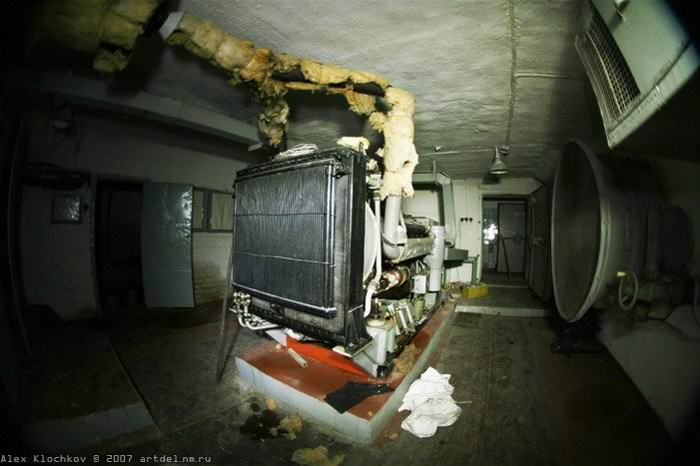
Since Soviet times, such structures have been officially called “civil defense shelters,” but the names “shelter,” “bunker,” and “bomb shelter” are often used. Formally, such names are not correct, but everyone understands what we are talking about, and we will also use them.
How many similar buildings were there across the country? It was not possible to find exact information, but here is the data for Yoshkar-Ola, where I have the pleasure of being now: 59 shelters were built throughout the city, half of which theoretically can still save from a nuclear strike, but most of them are now used as warehouses , and in reality there may simply not be enough space for survivors. Throughout the city you can find above-ground parts of ventilation shafts and emergency exits of bomb shelters, even on the central streets.
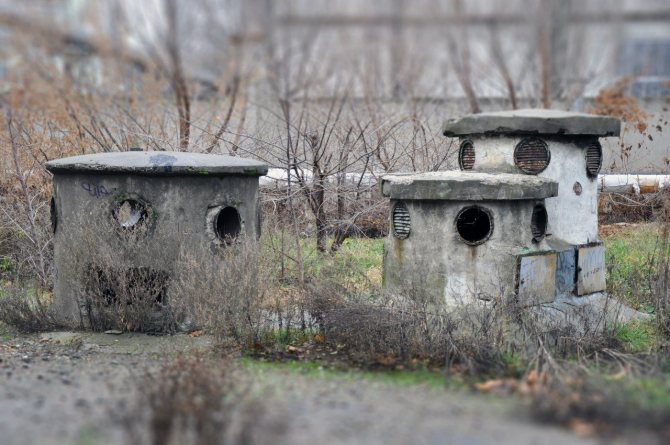
What exactly was a good Soviet shelter supposed to protect against? In general, everything is a little more complicated than just radiation or a bomb, and therefore the walls of the structure are required to protect against many disasters at once.
A nuclear explosion causes a whole range of consequences: the blast wave is extremely dangerous even at a relatively large distance, the light wave is no better, it causes burns, blindness and fires. Then comes powerful radiation, and after that comes the fallout of radioactive fallout and dust.
In addition, the shelter filters simultaneously protected against bacteriological and chemical weapons and were supposed to cool the too hot air from the surface. The latter is perhaps the most dangerous thing that can befall those saved in a bunker; American private shelters, for example, offered almost no protection from this at all.
How to face a nuclear apocalypse in comfort: A luxury refuge project in Kansas
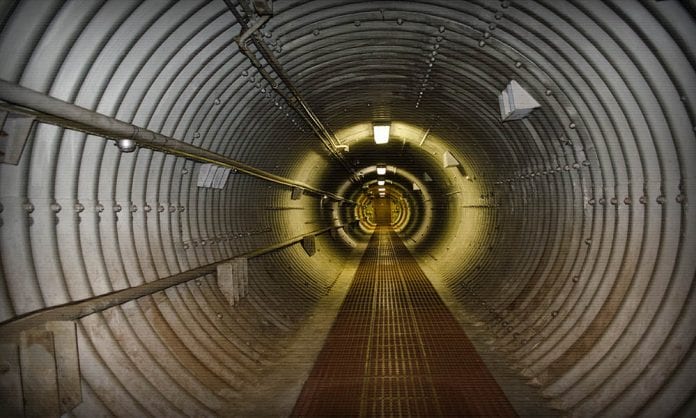
This shelter is considered the most luxurious way to sit out the Fallout that broke out on the street in comfort. And a whole line of people has already lined up wanting to buy an apartment for 2M bucks at a formerly abandoned missile base in the depths of the Kansas prairie.
Perhaps buyers know something that we don’t yet know?
Luxurious apartments are equipped with all possible modern amenities, including a swimming pool, cinema and library, their creators, of course, guarantee that you will calmly and comfortably survive the end of the world, if it ever comes. The bunker is designed to protect against any kind of global trouble, ranging from economic collapse and solar flares to terrorist attacks, epidemics, zombie apocalypse or nuclear war.
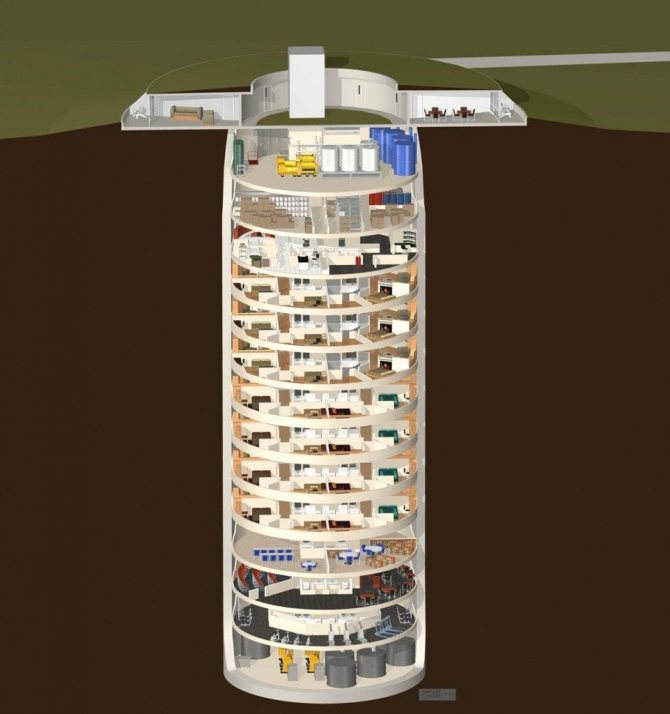
Your luxury apartments, resistant to solar radiation, the consequences of nuclear war or the use of biological weapons - from $2 million!
Naturally, if you want to make a claim and receive compensation under the guarantee, then most likely there will be no one to call, but insurance and guarantees will be your smallest problems
So far, the project has already attracted four buyers, paying a total of $8 million, so that there will be somewhere to escape when the Last Day arrives. And developer Larry Hall has the option to create three more similar shelters when this one fills up.
According to Hall, his clients want to be protected from the effects of any global disaster, from sudden solar flares, nuclear war and terrorist attacks to pandemics and food shortages, and want to spend the rest of their days in comfort and peace.

Interior: Located in a former nuclear missile silo, the apartments are arranged in a circle. They have everything you need to comfortably watch the world as you and I know burn down.
The developer himself will be your neighbor if you decide to make such an investment. Larry Hall also bought himself an apartment in a shelter under construction to protect his family from his greatest fear - solar radiation and solar flares that could cause global chaos by destroying all electrical networks on the surface of our planet.
the shelter as a weekend home during peacetime
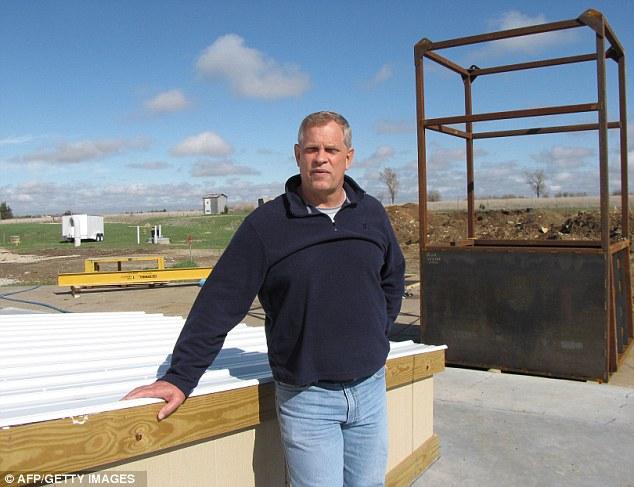
Larry Hall above his hideout under the blue Kansas sky
Hall is not the first in the United States to buy up abandoned silo launchers to create shelters in the event of an apocalypse. The mines were built to withstand a direct hit from a potential enemy's ballistic missile, and even the paranoid would feel protected inside concrete walls three meters thick and more than 50 meters underground.
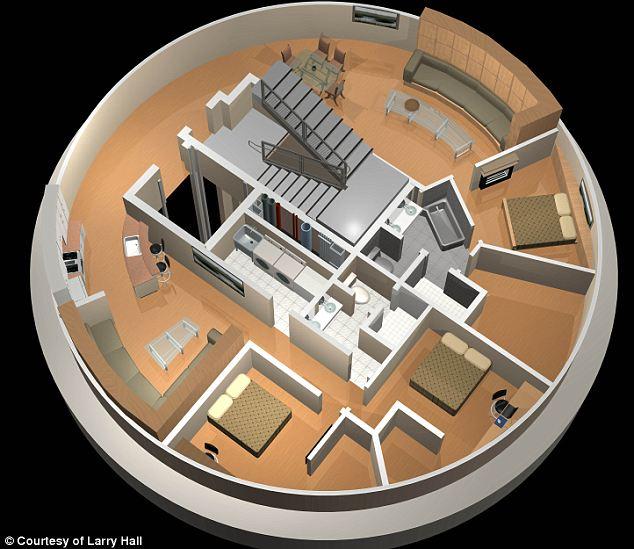
Judging by the layout, all apartments have all imaginable amenities
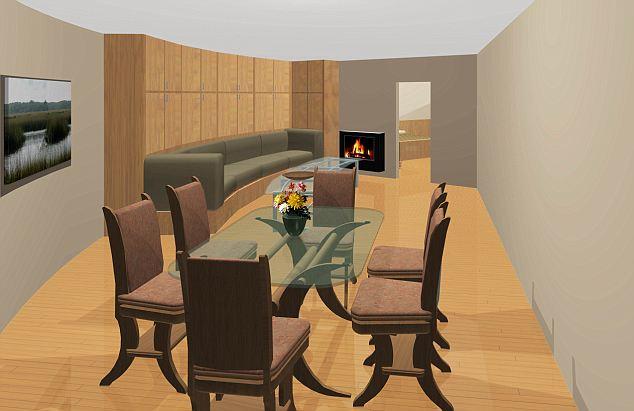
The living room with an electric fireplace looks cozy and spacious
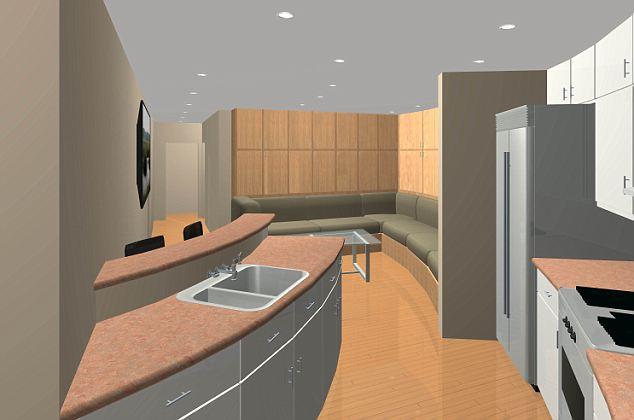
And the food is good
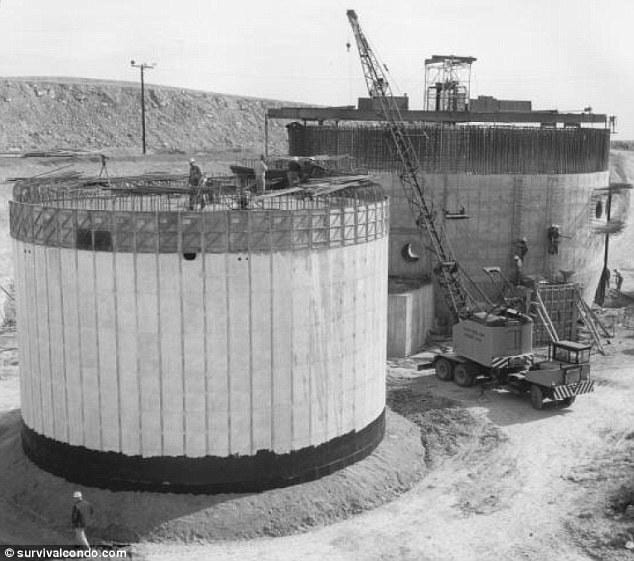
The Atlas F nuclear missile silos as they looked when built in the 60s are what Hall uses to build the shelter.
Of course, it would have been possible to settle down in the former premises of the garrison serving the mine, but Hall decided to use the mine. Seven of the fourteen underground floors are selling for $2 million per module (floor) or $1 million per half module. 3.5 floors have already been sold, two floors are in the design stage. In this shelter, another two and a half floors are available for sale (the rest will be occupied by technical premises).
Currently the modules are connected by metal stairs, but after construction an elevator will also be available.
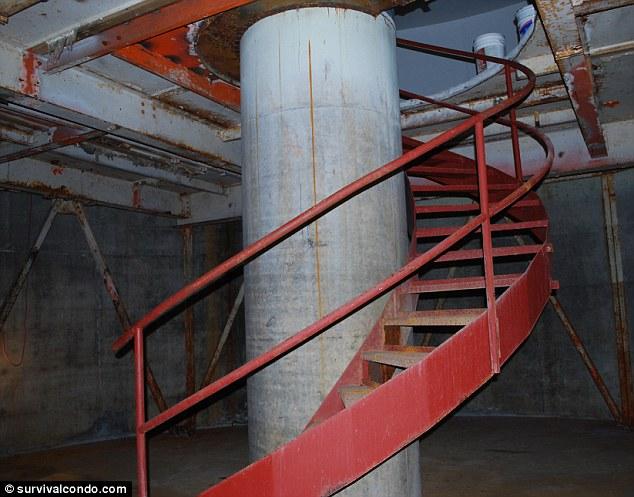
The bunker modules are connected by metal stairs, but an elevator is also available
The shelter is designed and built on the principle of maximum protection. The modules are not only located inside a concrete shaft with thick walls, but also inside a core of steel and concrete, which also protects them from earthquakes.
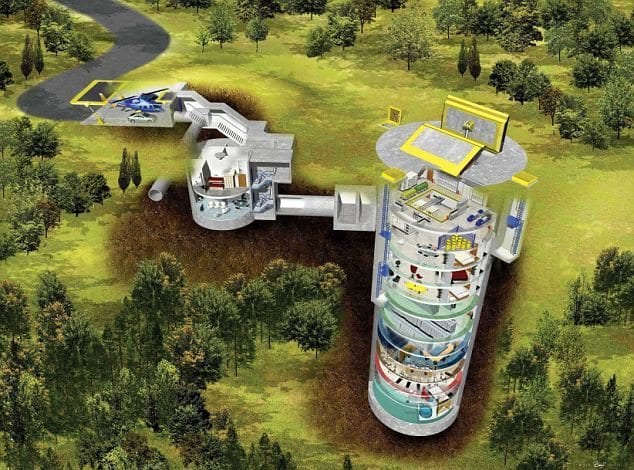
General layout of the shelter
What is in this shelter? How does it work?
Common areas for all include:
- Elevator and stairs throughout the facility
- Backup electricity sources and generator
- Water tank with huge reserves and filtration system
- Air filtration system (protected against nuclear, biological and chemical hazards)
- Household goods store
- Indoor pool and spa
- Full gym
- Bar and Lounge Cafe
- Control center
- Medical Center
- Digital weather station
In addition, among the utility rooms, Hall plans to build a farm capable of providing vegetables to 70 people during the entire period of residence, as well as a warehouse filled with dry rations in order to feed all residents of the shelter for 5 years.
The upper non-residential floor and external premises are designed to ensure the safety of shelter . On other floors there can be a swimming pool, a library, a cinema, and during isolation they can be used as a school for the children of shelter and a medical center.
A set of life support systems provides the comfortable bunker with energy from traditional power sources, and solar panels, a windmill and diesel generators will also be used.
Giant underground reservoirs will hold a supply of water, which will be filtered through coal and sand. And, of course, a well-thought-out security system and personnel will protect the residents of the luxurious refuge from hordes of marauders and other external dangers.
The elevator will only work for those whose fingerprints are entered into the database. Cameras will monitor the barbed wire fence around the perimeter of the shelter. The security service has all possible protection scenarios, from a simple warning to the use of weapons.
The fear of the End of the World has haunted humanity since the first days of its existence, and modern mass media only contribute to its development. The theme is especially well developed in the games of the Fallout . The recently released and mega-popular The Hunger Games and Mad Max: Fury Road also awaken and put to work the darker side of our imagination.
Global risks of a technogenic and anthropogenic nature are not getting smaller, and if you want to meet the Apocalypse with comfort, join Larry Hall in Kansas, or take his example, and create your own refuge where you live.
How was the shelter set up?
Apart from the unique example of the German Hochbunkers during World War II, air raid shelters were located exclusively underground. The main difference between the different types is that some were built separately, away from other structures, but most were still located in the basements of buildings. First of all, this applies to government agencies and factories. If you want to find out exactly where the cool and serious shelters were - point your finger at the city hall building or a large and important plant during wartime - you definitely won’t go wrong.
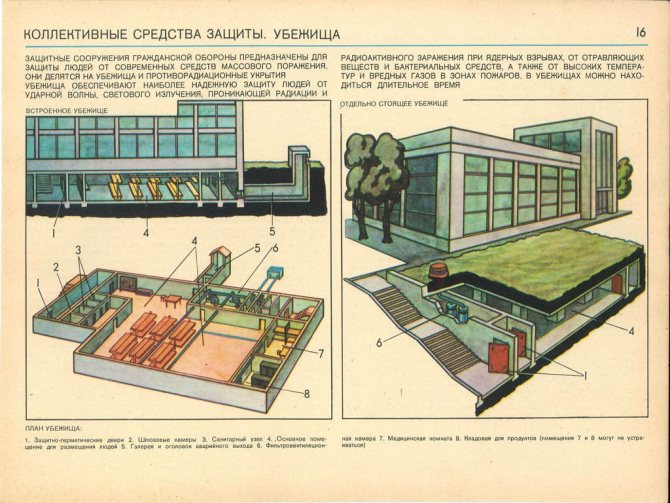
A typical shelter looks something like this
Let's say we went down to a Soviet civil defense shelter in its heyday. What would we see there with the eyes of a layman? Firstly, massive metal doors behind which are vestibules, that is, something like airlocks on a space station. Everything was done so that people could run in here even after the explosion: some of them could be thrown into the ventilated vestibule, completely closed, and only after that the survivors could be allowed inside. At the same time, radiation or poisonous gases did not enter the shelter itself. The tightness was maintained not only due to powerful fitted doors, but also due to the fact that a higher pressure was artificially established in the shelter: the air still went out a little through microcracks and gaps in the doors, but did not enter inside.
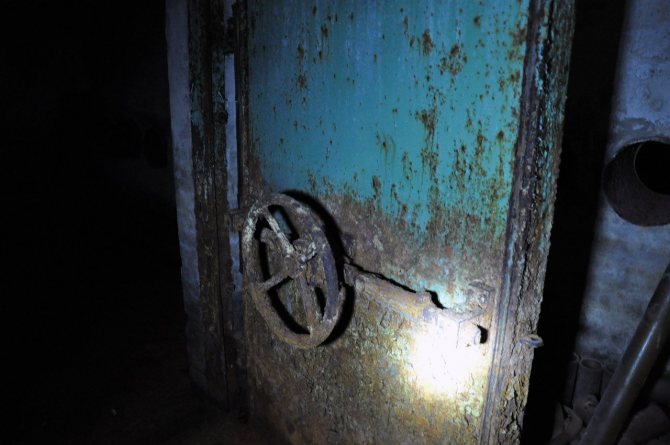
Secondly, we would see that in general everything was arranged in a Spartan way: the central room was intended for survivors and was poorly equipped for a comfortable stay. There were only two-story bunks and seats.
The capacity of the bunker and the power of the filter were calculated according to the principle of “5 people per 1 bunk”. Around the main room there were auxiliary rooms, and here they are - the most interesting part of the shelter.
Air supply system, light shelters
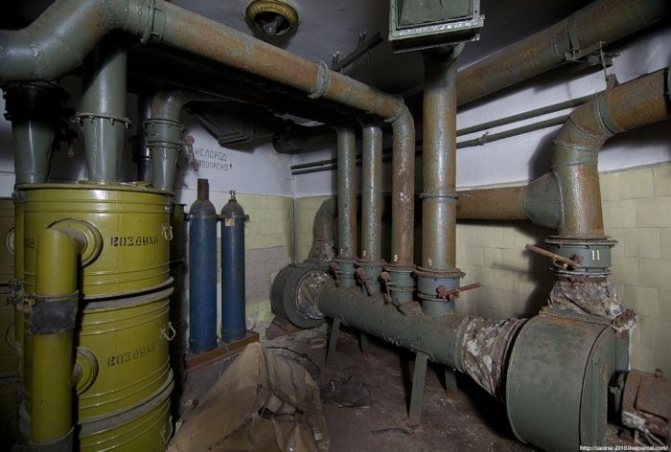
On the one hand, everything is quite simple: the air entering the premises had to be filtered and then distributed among the rooms. In reality, the system turns out to be quite complex. The incoming oxygen had to be purified from a large number of hazardous substances at once. Filters from radiation dust and smoke, filters from bacteriological weapons, filters from chemical weapons and a cooling system for air heated by explosions and fire - all this was present even in the most unassuming of Soviet shelters.
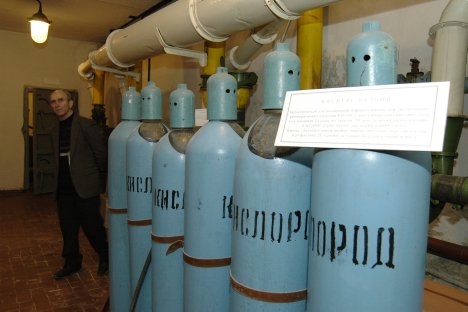
Cooling is a separate story, since it unexpectedly turned out to be very problematic: the air was cooled by passing through chambers with sand and gravel or, like a moonshine still, by pipes with ice water flowing through them.
But the last option only worked where there was an artesian well. By the way, now such filters cost a lot of money; for example, replacing one filter in a shelter will cost a million rubles. It’s hard to imagine how much it would cost to refurbish the entire complex.
Electricity supply
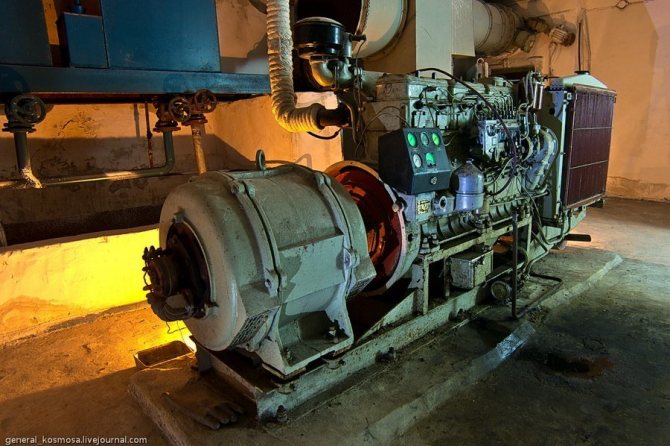
It is carried out using city communications, but there is a high probability that after a powerful and close strike they will not work, so a diesel electric generator was placed in each shelter. This is the heart of the entire structure; without it, all other systems simply will not work. Even taking into account oxygen cylinders and regenerative cartridges, it would not be possible to survive without a diesel engine for long, which is why a lot of attention was paid to cooling and working with it, and in large shelters there were always backup diesel engines.
Bathroom

Everything is clear here: the toilet was connected to the city’s sewerage system, but in case it failed, there were separate pits for removing waste products. Harsh, of course, but this is a nuclear apocalypse, not an amusement ride.
Water supply
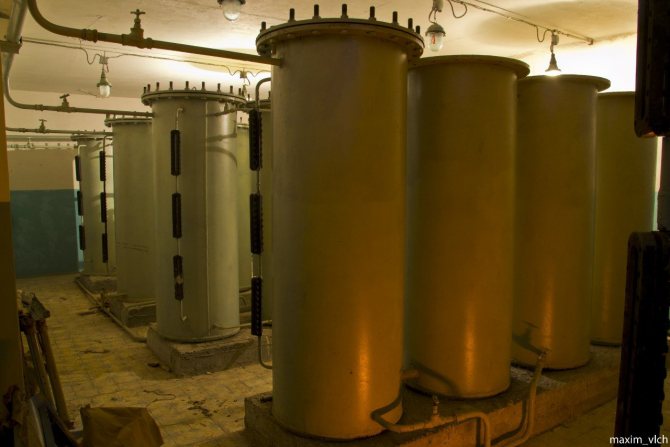
As in previous cases, it is connected with city communications. It is clear that there is a high chance that the municipal water supply will be unusable, so water tanks were placed in the shelter.
You can often see tanks hanging from the ceiling - they are there so that there is no need to pump water and waste extra energy. At best, artesian wells were used, which greatly simplified many tasks.
“Such shelters can become a mass grave.” Printing house in a bomb shelter
The Krasnoyarsk city printing house is located deep underground, in a second-class bomb shelter with an area of about one and a half thousand square meters. In the event of a disaster, more than a thousand people could be accommodated here. This is the only “working” bomb shelter in the city; the rest, according to the director of the printing house Sergei Pogozhev , have fallen into disrepair: they are flooded, there is no light, heating and other amenities necessary for life. If the apocalypse happens, state bomb shelters will simply become a “mass grave.”
To find the City Printing House, you need to try. Although it is in the center of Krasnoyarsk, it is hidden in the courtyards behind the clinic, behind a fence, and surrounded by residential buildings. The front door is heavy, iron. Behind her is a long, cold corridor down. The depth of the bomb shelter is about 10 meters. The inside is very humid, damp and smells musty.
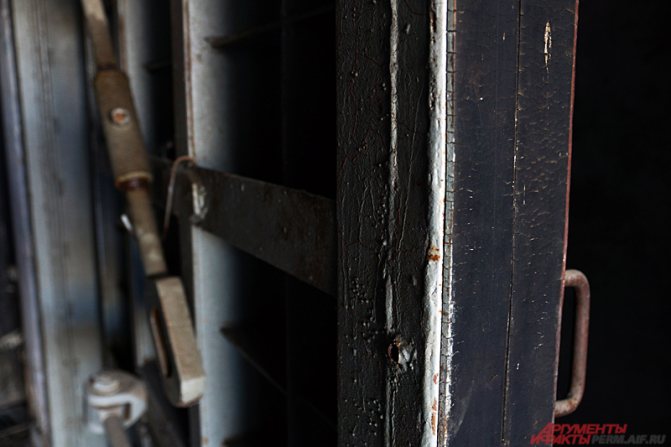
The doors can withstand the shock wave from a nuclear bomb. Photo: AiF / Dmitry Ovchinnikov
A barometer hanging on the wall shows humidity at 85%, often the needle reaches 100%. This happens in the off-season when it rains outside. In these conditions, mold grows well - the main enemy of printing, which they have been fighting here for twenty years. Mold even destroys concrete, not to mention paper; it is impossible to eradicate it. The only way out is to dry it, which is what they do here.
Printing paper lies in the driest places; it and printing presses are protected with plastic film from water that drips from the ceiling.
“Our bomb shelter doesn’t even have waterproofing. When they built it, they forgot to lay tar and roofing felt. I think they just ripped it off, filled the shelter with soil, and now any rain seeps in here, dripping all the time at all points. That is, it is impossible to organize a cafeteria, warehouse or nightclub here, because water runs in many places. We collect water in trays and buckets. For a manufacturer this is a solvable problem, but for a businessman it is not; if the goods are damaged, he will go bankrupt. We drag the paper back and forth, the dampness constantly pursues us. I have to admit, I'm already tired of this dampness. We catch water when it rains, snow melts, groundwater flows constantly. It is impossible to warm up in such conditions; clothes are damp and cold. When we started the printing house, we didn’t know about all this,” comments Sergei Pogozhev, director of City Printing House LLC.
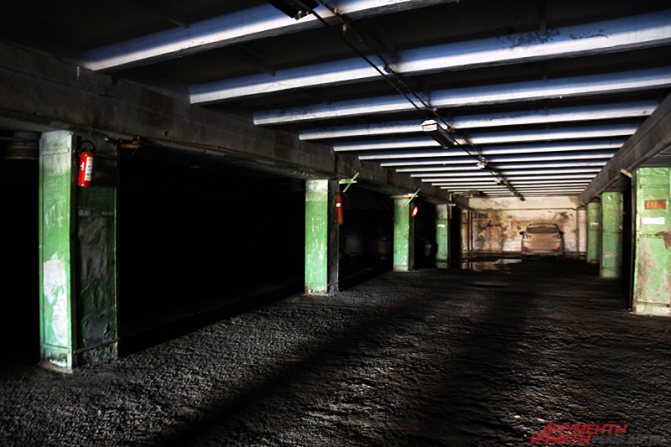
Photo: AiF / Dmitry Ovchinnikov
It is actually very chilly and cold in the printing house. Air temperature 9 degrees. It is not clear how people work here: underground, in a confined space, without windows or doors, in the cold. It is almost impossible to hire specialists, complains Sergei Pogozhev. According to him, only 30% of people can stay underground temporarily, but then they feel uncomfortable and leave.
Article on the topic
Bunkers, forests, Altai Mountains: where are Russians preparing to meet the end of the world?
Currently, City Printing House LLC employs 30 people. They are not eager to communicate with me. The girl behind the printing press declined to comment:
“I’d better not say anything, otherwise I’ll tell it like it is!”
The majority of Krasnoyarsk bomb shelters - more than 90%, according to Pogozhev - are in deplorable condition, they are mothballed, they have “knee-deep water, no electricity, no ventilation” - no conditions for living. If something happens, “these bomb shelters will simply become a mass grave,” since “the state is the most stupid owner of state facilities,” Sergei Pogozhev is sure.
But for businessmen, bomb shelters are too expensive.
“If you give them to merchants to organize warehouses, for example, then they will most likely be looted. First of all, they will remove the doors and sell them for scrap metal, they will rip out all the cables, there is a lot of aluminum and copper here. There is no product or product that can withstand regular flooding. Therefore, the bomb shelter will be abandoned to the mercy of fate, and no one will force businessmen to return here,” says Sergei Pogozhev.
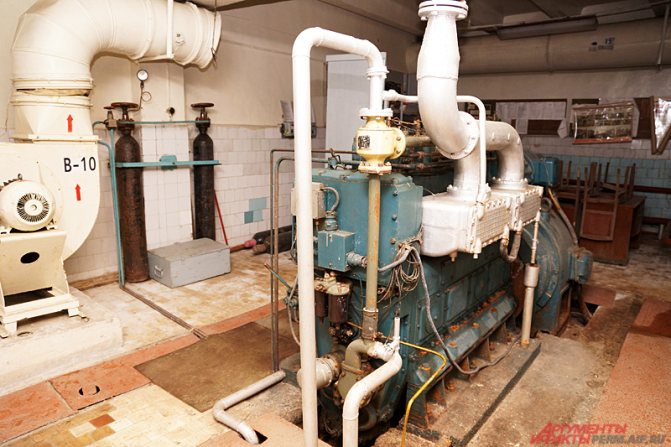
Diesel power plant that provides emergency lighting. Photo: AiF / Dmitry Ovchinnikov
And for production workers, bomb shelters are suitable, he is sure, because production “is mechanics, machines, tools, trained people, production workers solve any problems.”
Pogozhin himself often has to work in his printing house as a repairman. In his office, right on the wall hang plumbing tools: screwdrivers, pliers, all sorts of nuts and bolts, etc.
The city printing house is perplexed why the state does not subsidize production workers who rent bomb shelters for the costs of maintaining these facilities, which are actually strategic. The printing house pays 40 thousand rubles monthly for light alone.
Article on the topic
The secret of the dungeon. An air-raid shelter in Perm is being cleaned of rats and turned into a parking lot.
“When they rent out bomb shelters, they charge such a huge sum, as if it were an ideal object. These are enslaving conditions. I won’t even name the price, it’s very high. If production workers abandon these bomb shelters, they will become unusable. In 3–4 months they will be flooded, the system will short out, then the ventilation motors will rust, and it will be impossible to restore all this. It is necessary for people to be paid extra so that they preserve these state objects,” explains Sergei Pogozhev.
State bomb shelters are, as a rule, mothballed.
“State bomb shelters are a dummy. There are no bomb shelters now; 90% of them have been lost. There are a dozen and a half such objects left in Krasnoyarsk, but there were more than 570, I have accurate data. I know that the district administrations have preserved bomb shelters, but these are third class - have you seen such free-standing mounds in the courtyards? I have a second, higher class, these are buried bomb shelters for more than a thousand people. And the first class is the best, everything is autonomous, it has its own diesel engines, electrical equipment, but they are classified,” concludes Sergei Pogozhev.
Individual features
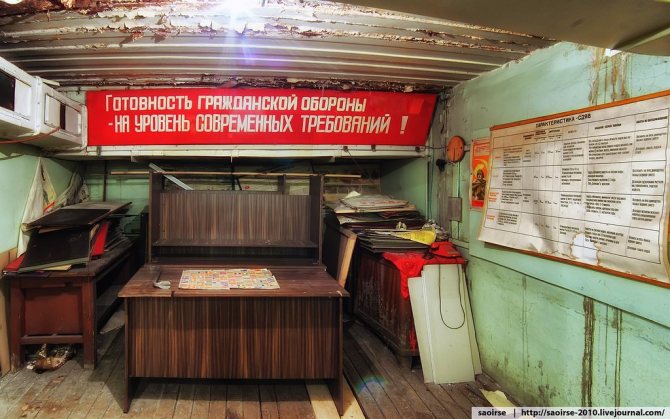
In addition to the standard set of auxiliary premises, more serious shelters could have additional devices that should have significantly increased the survival rate of survivors.
Here I am forced to rely on the stories of an eyewitness, an employee of the Yoshkar-Ola MMZ, which produced parts for ballistic missiles in Soviet times. Of course, there was a civil defense shelter there and, of course, it was bigger and cooler than other city shelters.
In addition to the usual premises, there was a freezer for storing food, additional diesel engines and even hydroponic installations for growing vegetables (which our proletarian persistently calls “pumpon”). In addition, during the Cold War there was an impressive weapons depot here, so in such a shelter one could not only wait out the first time before evacuation, but also, in principle, not be afraid of hypothetical yao-gai or death claws. Some of these shelters were supposed to have bicycle power generators, which in itself seems like a pretty cool idea.
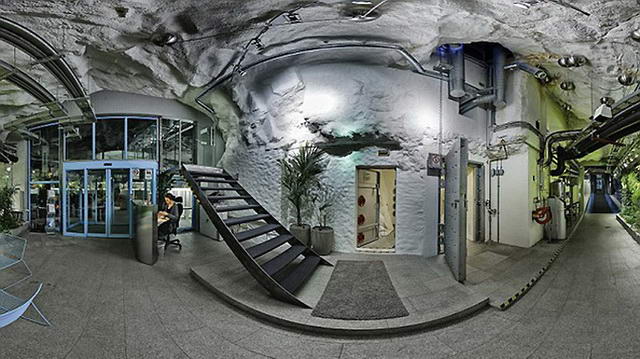
When it comes to shelters and bunkers, there are many more interesting topics, for example, Albanian bunkers that look like prehistoric dolmens, modern Israeli bomb shelters and Finnish radiation shelters that can accommodate almost the entire population of the country (where is Vault-Tec with its 122 shelters) . But about all this some other time. For example, when we complete Fallout 4.





